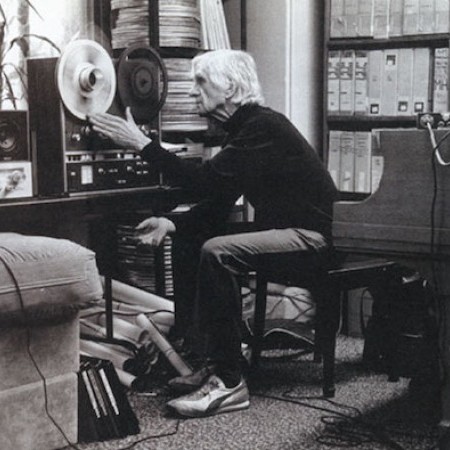
Gil Evans (1912–1988)
(Photo: Carol Friedman/gilevans.com)Gil led his own band in Stockton, California, from 1933 to 1938, playing accompaniment-rhythm piano and scoring a book of pop songs and some jazz tunes. When the band was taken over by Skinnay Ennis, Gil remained as arranger until 1941.
“I was also beginning to get an introduction to show music and the entertainment end of the business,” Evans recalls. “We used to play for acts on Sunday nights at Victor Hugo’s in Beverly Hills, and the chance to write for vaudeville routines gave me another look at the whole picture.”
Thornhill had also joined the Ennis arranging staff, and the two wrote for the Bob Hope radio show while the Ennis band was on the series. The radio assignments gave Evans more pragmatic experience in yet another medium.
“Even then,” Evans remembers, “Claude had a unique way with a dance band. He’d use the trombones, for example, with the woodwinds in a way that gave them a horn sound.”
In 1939, Claude decided to form his own band. Evans recommended the band for a summer job at Balboa, and he notes that Claude was then developing his sound, a sound based on the horns playing without vibrato except for specific places where Thornhill would indicate vibrato was to be used for expressive purposes.
“I think,” Gil adds, “he was the first among the pop or jazz bands to evolve that sound. Someone once said, by the way, that Claude was the only man who could play the piano without vibrato.
“Claude’s band,” continues Evans, “was always very popular with players. The Benny Goodman band style was beginning to pall and had gotten to be commercial. I haunted Claude until he hired me as an arranger in 1941. I enjoyed it all, as did the men.
“The sound of the band didn’t necessarily restrict the soloists,” Gil points out. “Most of his soloists had an individual style. The sound of the band may have calmed down the over-all mood, but that made everyone feel very relaxed.”
Evans went on to examine the Thornhill sound more specifically: “Even before Claude added French horns, the band began to sound like a French horn band. The trombones and trumpets began to take on that character, began to play in derby hats without a vibrato.
“Claude added the French horns in 1941. He had written an obbligato for them to a [Irving] Fazola solo to surprise Fats. Fazola got up to play; Claude signaled the French horns at the other end of the room to come up to the bandstand; and that was the first time Fazola knew they were to be added to the band.
“Claude was the first leader to use French horns as a functioning part of a dance band. That distant, haunting, no-vibrato sound came to be blended with the reed and brass sections in various combinations.
“When I first heard the Thornhill band,” Gil continued, “it sounded, with regard to the registers in which the sections played, a little like Glenn Miller, but it soon became evident that Claude’s use of no vibrato demanded that the registers be lowered. Actually, the natural range of the French horn helped cause the lowering of the registers. In addition, I was constantly experimenting with varying combinations and intensities of instruments that were in the same register.